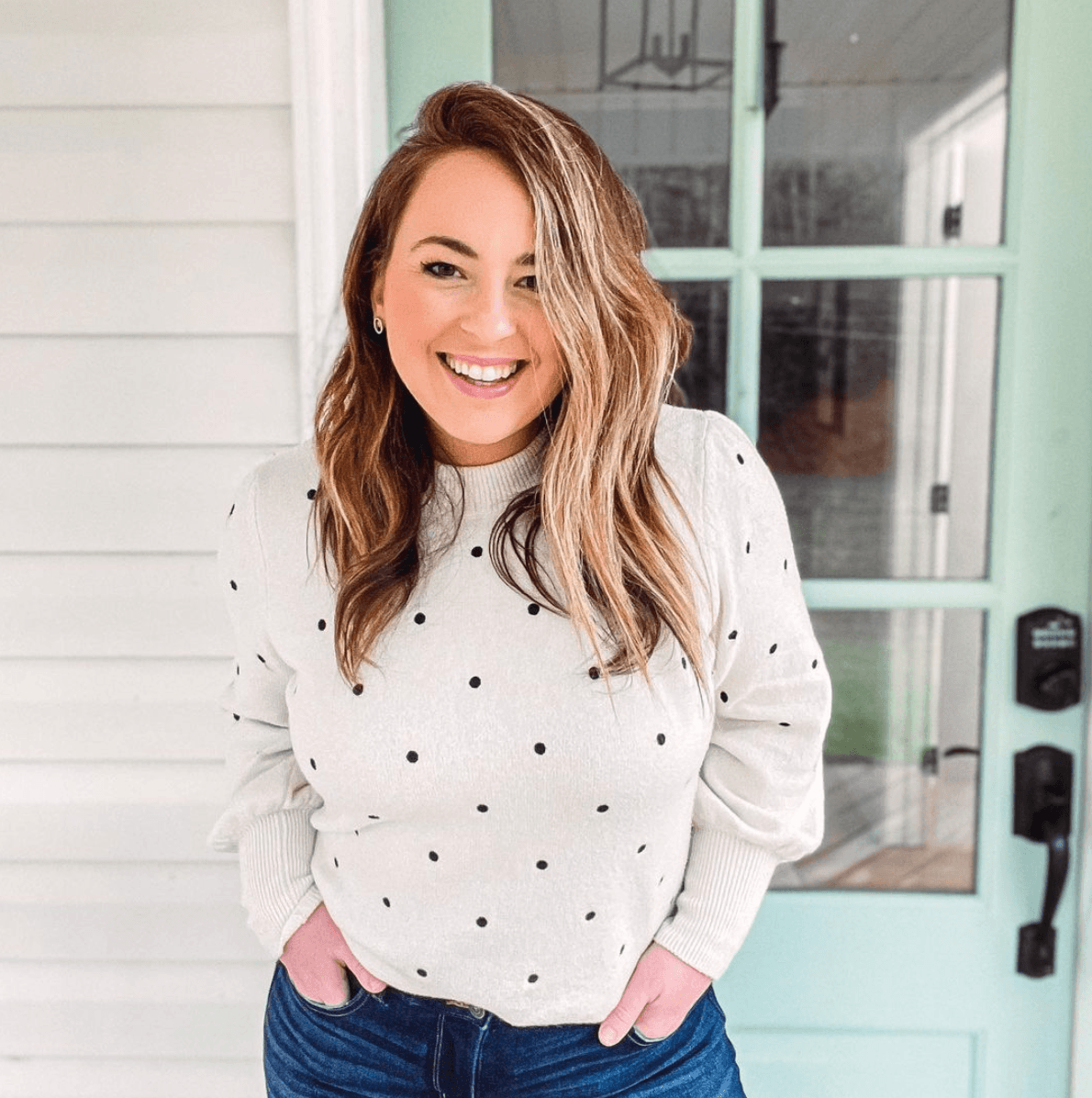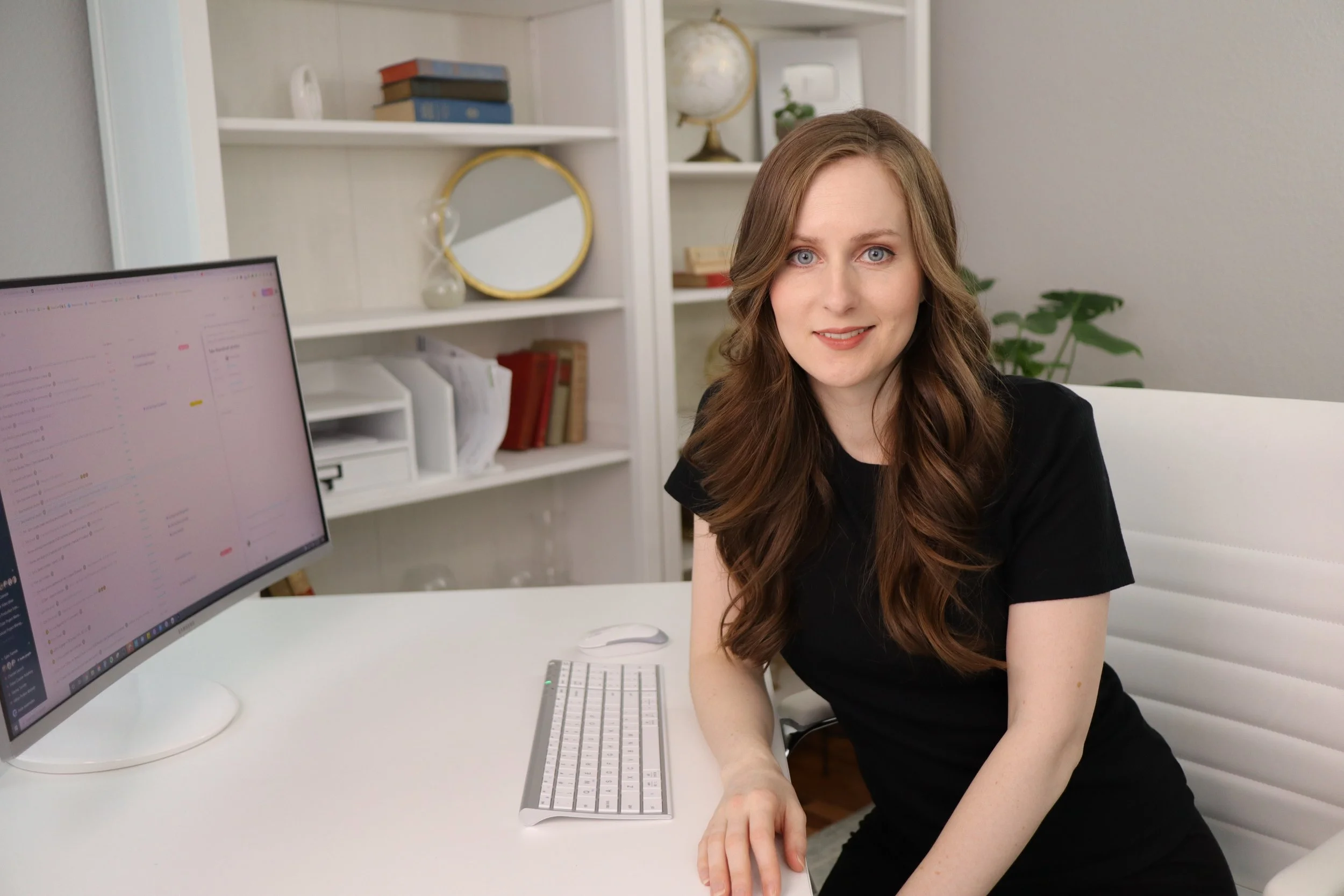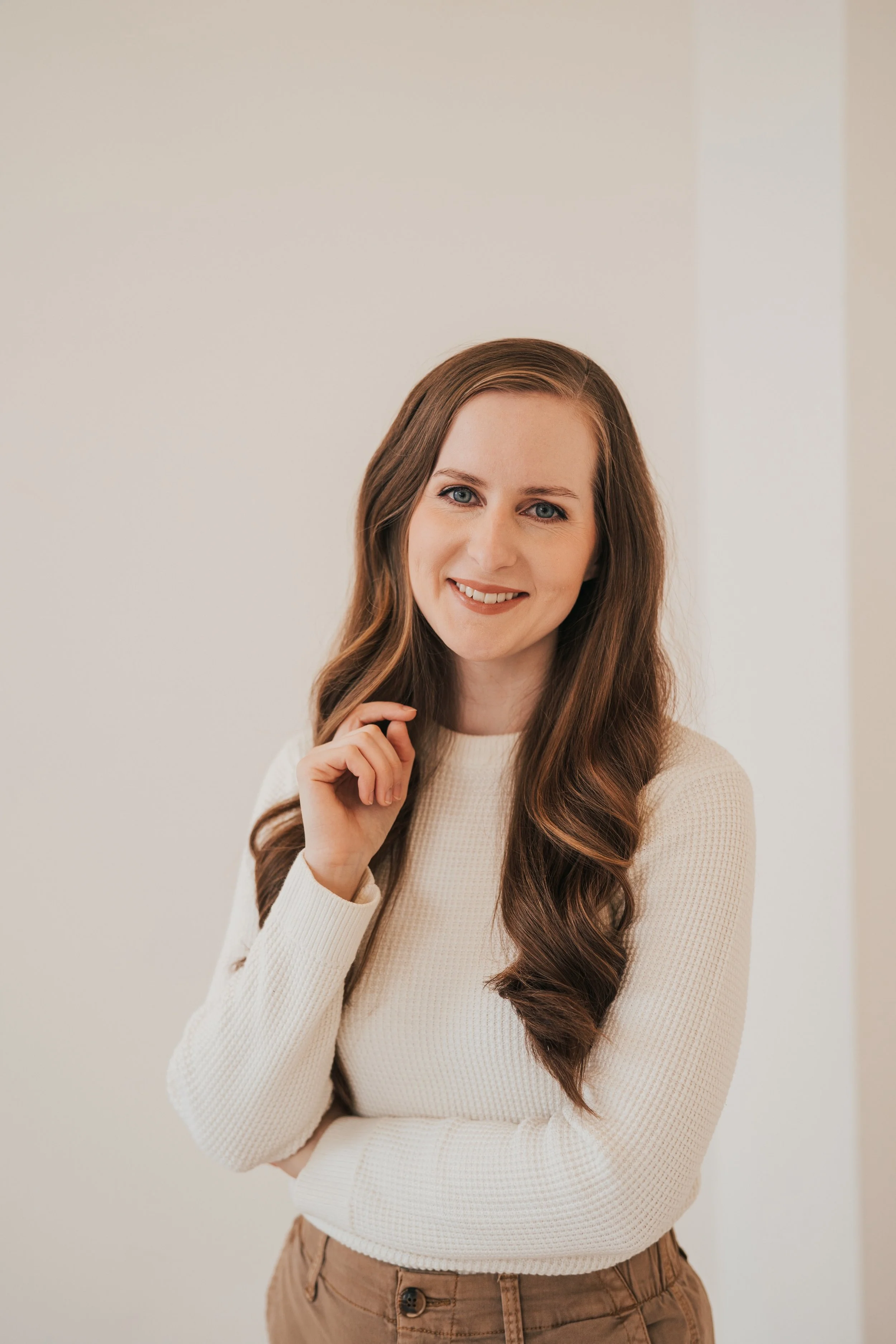Episode 73: The Social Sales Strategy with Jessica Stansberry
EPISODE 73:
The Social Sales Strategy with Jessica Stansberry
If you’re not playing the game, you’re not going to win the game.
Experimenting with new platforms, new tools and new strategies is part of the game, but throwing content at a wall like spaghetti isn’t playing the game to win. A winning social sales strategy takes commitment and consistency.
Approaching your social sales strategy like a science experiment might sound complicated, but it doesn’t have to be. You just have to know what your basic hypothesis is so you can analyze the metrics when you’re done.
I am joined today by Jessica Stansberry. Jessica is a longtime friend and powerhouse content creator.
Jessica is the owner and founder of Hey Jessica LLC. She helps rockstar entrepreneurs and content creators use video and content creation to grow their brand and show up as an expert. She throws down booty-kicking advice on her weekly podcast, Hey Jessica Radio, on her YouTube channel, and blog and shows up every day on Instagram to make sure the tips never stop coming.
I'm super excited to have her on the show to share some of those tips with us and give us some behind the scenes, insider info on her social media strategy.
How does your business make money?
Jessica shared that, “the biggest income generator for my business is through courses. I sell courses on things like how to grow on YouTube. I also have a course for selling through Instagram, and some other mini courses that I have bundled up in some like SLO offers.”
How do you use social media as the marketing engine to make those core sales? What different platforms are you on and what kind of content do you publish on each of those platforms?
Jessica is a “a big believer in only having one social or social platform that we're really focused on.” She said her “current focus is on Instagram.For the most part, my Instagram is kind of the nurture piece. It's the piece where people, yes, they could find me on Instagram. Most of the time they find me on YouTube or my podcast or whatever and then they come into Instagram and that's where we really further the relationship. From there, I either send them to my podcast, to my email newsletter or to, you know, actually purchase something.”
Unlike most entrepreneurs, Jessica’s podcast is the bottom of her funnel while most people’s podcasts are top of the funnel.
Jessica shared “a lot of times people will have a podcast and they consider that their content creation platform, like this is how I am creating content. This is how people are going to find me. So they're going to search on Google and maybe find the blog post that accompanies my podcast episode, or they're going to search on Apple and find this podcast episode.”
“They're going to find me on YouTube. They're going to find me on social media. They're going to find me whatever, but my podcast is a great place for them to actually further their trust in me.”
It's always so interesting talking to Jessica because we do things so similarly. I have exactly the same theory about my podcast and from the beginning I thought podcasts just don't have the discoverability.
Do you not consider YouTube to be social media?
Jessica said that she does not “consider YouTube to be social media because it's really the content platform for me. It's the SEO. YouTube for me is a search engine. YouTube is a search engine with a social element. Yes, people can comment. Yes, people can share things like they could on other social platforms. That's not the point. The point is to give them videos that they want to see that are going to help them.”
What other searchable content do you create?
Jessica shared that her traffic also finds her “blog posts first because it ranked high in Google and then they come in through the site and then go to YouTube.”
What does your content creation process look like?
Jessica shared that she “would much rather sit down and talk to a camera than I would to sit down and write something out. I feel like I'm just much more natural at talking to people.”
For her podcast Jessica has bullet points and notes “but they're not entirely scripted.” Then her team will “take those pieces of content and she will articulate them into the written blog posts.”
Do you have a content repurposing strategy for Instagram?
So like you're focused on Instagram, but are you also trying to share your Instagram on your newsletter or Twitter or anywhere else?
For the most part “if it's created for Instagram, I keep it on Instagram.”
“Now that doesn't mean though, that I don't take topics and cross-platform. I talked about this thing on Instagram or on an Instagram Reell and it did really well. Now I'm going to turn it into a newsletter and expand on it even more, or I'm going to even turn it into a podcast episode and expand on it even more and vice versa.”
What is your Instagram Strategy?
Jessica shared that she posts “between two and three times a week. Most of those are reels because that's what's growing Instagram accounts.”
Jessica’s “posts and reels are both acting as like a magnet.” Her “posts are generally going to be uplifting, motivational, almost like a strategic lesson in an Instagram post. Whereas my reels are going to cause people to go ‘Oh, she gets me.’ Then they're going to want to follow me. Then they can learn about all the other things that I post about, or they can watch my stories.”
Jessica’s “reels are less about teaching, less about strategic content, and more about people being able to go ‘Oh my gosh. Yes.”
“Stories are actually like getting to know me, getting to trust me. That's where I show off even more of my expertise. Reels are really what's getting people there. They're the magnet. They're, what's going to get people to follow me and then stories are, what's going to get them to stay and get them to be a paying customer or buy something from me later.”
Have you tried posting any of your reels onto YouTube shorts?
Jessica shared that “It didn't do well at all. However, I feel like you, and I probably would have a similar opinion on this. I feel like our channels aren't set up for shorts and we're not in the position to make something go viral or have a takeoff from a short, but like my husband has a farm channel that he's rarely active on.”
“He goes in spells but I took a reel that he did on Instagram and put it on his YouTube channel and it did super well as a short.”
I've been really considering possibly starting a second channel, just to experiment with sorts. I know a lot of people have done this just to try different things but I don't really want to spread myself thinner right now. I want to focus on what's still working.
I do think that there is a big opportunity there for a channel to start with shorts, even if they want to do longer form content later, get some initial traction with shorts and then switch to whatever content they really like want to do long term, which maybe is short, but maybe they want to make longer videos as well.
Jessica shared that she “was on a clubhouse room and someone in that room was talking about how she had grown in six months to 2 million followers on YouTube, just from shorts.”
Tell me more about your Instagram Stories Strategy.
Jessica shared that her “highest numbers are on Sundays but that was the day I wasn't on stories. It was so confusing to me because I would post like a random thing and I would get, you know, this many viewers. Then when what I was actually saying was important, I wasn't getting that many viewers.”
She has started letting “stories expire on Sunday. On Sunday, my post that I know is going to get a lot of traction is some type of engagement story. So then I'm putting in things like a poll question, box, a slider, something that's going to cause them to also engage.”
II can think of a few different reasons why people might watch your stories more on Sunday. People are lazing around on Sundays, so maybe they are just on stories more.
Sometimes I feel like people’s stories are too long do you agree?
“I completely agree and last week was my kid's spring break. So I was just naturally less active on stories because I was in mom mode and I of course did stories and I even went on a rant, I think on Instagram at some point last week, but I had way less stories than I would normally have in a week. Our story views went up by an average of like 140 views per story.”How are you planning content?
“Instagram stories are mostly on the fly and I say on the fly, but obviously I have little strategies built in there, right? On Sundays or if I know I'm going to be promoting this thing or whatever. As far as posts and reels, I am generally actively looking for reels that I want to do.”
“I plan at least a week ahead of time, sometimes two weeks ahead of time. And I know the vision for the reel. I usually will just film it and then leave it in drafts until I'm ready to like, get ready to post it. Because a lot of times with Instagram reels, if you can edit them all day long and you go back and your edits are gone.”
“Fun fact, Ilearned it the hard way. If you sign out of Instagram or update your app on your phone, they will be gone. If someone else has access to your account they can't see your drafts. So it's really, really interesting because we were managing some social media accounts here locally, and we had a girl who was doing all these drafts of reels so that we could post them and then we couldn't see them.”
Do you have any strategy there with how you would plan out your feed posts?
“Yeah, so with Instagram, the really interesting thing is that, and it doesn't apply to reels, which is why it's interesting. So whatever, because Instagram is weird sometimes, but with feed posts, you kind of, it's kind of like on YouTube, where if you release a YouTube video and then you release another one, that second, one's going to kind of overtake the first one in the pattern of growth.”
“Generally you kind of want to give each post its own like 48 hours to get the most traction it can possibly get. So for me, it's just looking at the analytics on my Instagram and saying, okay, well, more people are active on Monday, Wednesday, and Friday, or more people are active on Tuesday, Thursday, Saturday, and also most people are active on these times during those days and that's kind of when I post.”“I will always spread it out by at least 48 hours.”
How do you decide what topics to post about?
“It’s kind of the same way I get ideas for my podcast is when somebody asks me a question, it goes in the note on my phone. I just kind of keep a running list and go from that to like what I've got going on for the week or the month or what I feel like I need to talk about based on what I have to promote and I go from there.”
Basically, Jessica has a plan about what your Instagram posts should be about, which would be like your recent YouTube videos or promotions that are coming up, things like that.
Do you notice a big difference between the performance of the graphics and your photos?
“I do when it's just a standard post, a picture of me always does better, but on reels, it doesn't matter. Like it doesn't matter what I do on a real, whatever cover photo is, it is totally fine. That's another reason I kind of like doing all these reels is one, they're a massive growth strategy.”
Are you ready to finally take the leap to six-figures?
Let's turn your inconsistent income into consistent $10K+ months. We'll show you how and guide you through the entire process.
Your business (and life!) will never be the same.
Show notes + links:
LISTEN TO THE FULL EPISODE TO HEAR:
How Jessica structures her various content platforms and social media in her funnel, and why
Why you should repurpose topics, but not content across platforms
Why Jessica committed to using Reels on Instagram as part of her discoverability strategy, and how she uses other Instagram tools to nurture new follows
How she mixes planned content with off-the-cuff observations, and where those posts go
resources from THIS EPISODE:
Facebook: @heyjessicallc













